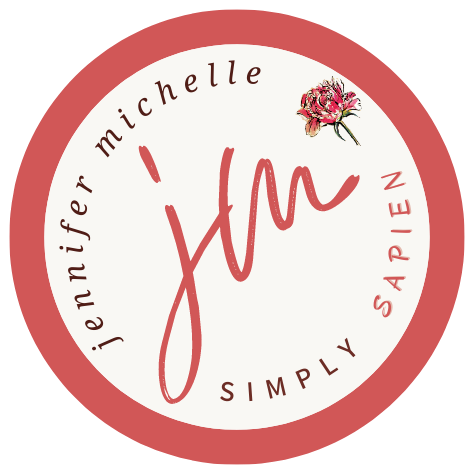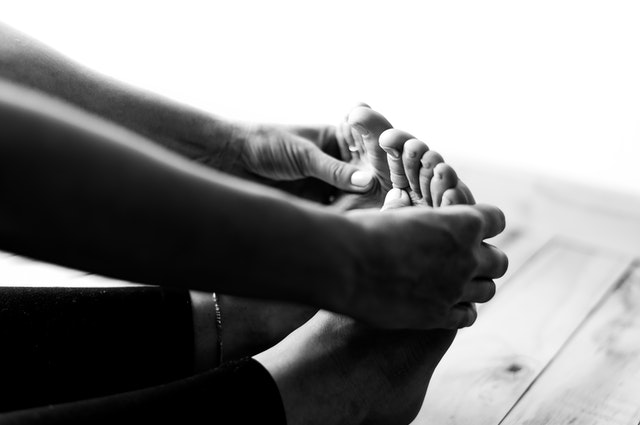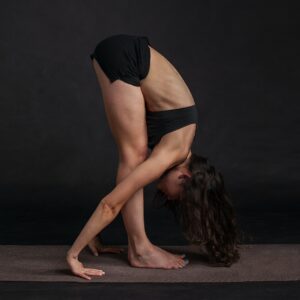I earn a small commission via affilate links at no extra cost to you.
When I worked as a massage therapist clients would often tell me they’d been stretching. Unfortunately, I don’t think any of them ever got it right. In fact, they ended up making their problem worse with their stretching routine. Before you take it upon yourself to begin stretching exercises at home, there are some things you should know. Stretching should not be painful, or cause more pain. Learning how to stretch a muscle helps you get the maximum benefits out of stretching, but it is also key to injury prevention. There are many factors to consider such as alignment and proper techniques for stretching.
How To Stretch
We live in a world where no pain, no gain is perceived as something desirable. In any physical exercise you’re more likely going to hurt yourself with a no pain, no gain attitude and stretching is a perfect example of that. There are stretch receptors in your muscles that monitor muscle tension. If you stretch a muscle belly too far, too fast you’ll activate the stretch receptors and the muscle will tighten up. You’ll end up with a muscle that’s tighter than it was before you began your stretching routine. The same is true when you ask a massage therapist for a deep tissue massage and they apply deep pressure before your muscle is ready for it, you end up with tighter muscles.
As you approach any stretching exercise it’s important to move slowly in and out of a stretch. Static stretching should not include forceful or vigorous movements. Instead, gently move into the stretching position and the moment you feel gentle tension on the muscle that’s as far as you need to go. With time and daily repetition you’ll find that you’ll be able to stretch farther without any added muscle tension.
Alignment For A Stretching Routine
You want to make sure you have a proper alignment in all stretching exercises. If the joints aren’t aligned properly you’re going to reduce muscle tension on one side of a joint while the other side remains tight. This creates joint instability which can lead to increased joint and muscle pain. A common example of improper stretching alignment is when most people perform a hamstring stretch. More often than not people allow the knee to push back to the point where it hyperextends the knee joint. In this instance, I always recommend that you engage the muscles on the front of the thigh (quadriceps) with a slight micro bending of the knee while you stretch the hamstrings. This allows you to stretch the hamstrings without compromising the back of the knee, it can also help maintain knee alignment while stretching.
If you’re not working with someone who’s trained to help you maintain proper alignment while you stretch, there are some general alignment rules.
- Don’t hyperextend your knee, elbow, or any other joint
- Don’t let your knee pass in front of your ankle
- Try to keep your toes and knees lined up
- Keep your lower and middle back straight
How To Determine The Tight Areas Of Your Body
First, picture an imaginary line on the side of your body. If you’re in proper alignment your ear, shoulder, hip, knee, and ankle should fall in one line when you’re standing. When I mention this, most people put on their best posture to demonstrate. However, that’s not what you want.
If you want to see where you are out of alignment, where your symmetry is off, do this: close your eyes, wiggle around, and then freeze in place. Using a mirror or a friend look and see where your body isn’t symmetrical. Do you see more of your left ear in the mirror than your right? Is your chin in line with your sternum? Is one shoulder higher than the other? When you look down at your hands do the backs of your hands face forward or is it your thumbs? If you put your hands on your hips is one side higher than the other? Where are your feet? Is one foot in front of the other? Do your feet turn out or in?
All of these little clues tell you where your body has shortened muscles versus weaker muscles. Explaining all of these nuances would take me more than 1 blog post. This is a book I recommend to help you begin your stretching routine to help with proper alignment.
The Importance Of Symmetrical Stretching
The best tip I can give you on how to employ stretching exercises is to simply stretch both sides of the body. So often clients would come to see me and tell me they’d been stretching, but they’d only been stretching the side that hurt. When I took that client’s leg through range of motion exercises I discovered it was looser than the side that hurt. In their stretching routine, they had created more pain because the loose hip had to fight for stability against the tight hip.
Always make it a point to stretch both sides of the body. You should stretch the right side and the left side, along with the front and back of the body too. The thing to notice is how far you are able to move each side. What does your range of motion look like? The general rule of thumb is that you want both sides to move the same distance. That being said, you also don’t want hyper-mobile joints (joints without enough tension). Stretching exercises are good, and range of motion is good to a point. You don’t want to go beyond the joint’s natural limits. Ligaments connect bone to bone and they’re made up of white collagenous fibers. When they’re overstretched it’s difficult to bring that tension back. Tendons are a bit different, although they’re made of the same collagenous fibers they’re also attached to a muscle. You can flex muscles with weight-bearing exercises to strengthen tendons.
How Long Should You Hold A Stretch?
You can hold a stretch anywhere from 10 seconds to 5 minutes. However, you’ll gain different benefits depending on how long you hold the stretch for. If you’ve ever practiced Yin Yoga you know that the postures are held for 5 minutes with the goal of stretching the fascia. Fascia is like the pantyhose around your muscles and muscle fibers. If the fascia is tight, or if the fascia is pulling at an odd angle it affects how the muscle contracts, and also how much it can relax. Personally, I’m all about the fascia but there are some things to know. You can’t exclusively do long stretching exercises day after day or you risk joint hypermobility. Yin Yoga is a passive form of yoga, meaning you’re not actively using your muscles. It’s kind of like lying on the floor in various positions for 5 minutes at a whack giving yourself what feels like a massage. You want to balance your long stretches with active muscle exercises such as hatha yoga, weight training, etc. (I own this Yin Yoga DVD set if you’re curious. It’s awesome and it includes Yang (opposite of Yin) routines too.)
Stretches held for a shorter duration will lengthen the muscle but they’ll have little effect on the fascia. Stretching will create space between the muscle microfilaments which makes room for fluid exchange. Think of it as squeezing out a sponge. You apply force and the liquid gets squeezed out, but when you release the pressure it makes room for the new liquid to take its place. In the instance of muscle stretching, you’re helping the body remove metabolic wastes and allowing new blood cells, nutrients, and hydration to infuse the cell. My entire paleo journey began because I was chronically stiff. I’m much better than I used to be. Food choices have made a huge difference, specifically the removal of nightshades which can cause the calcification of soft tissues. Even then, a 10-second stretch feels laughable to me unless you’re in a yoga class. I’d say give it 20-30 seconds at least.
An Interesting Experiment: Stretch one hamstring for 30 seconds and the other for 2 minutes.
You’ll definitely feel a difference.
When stretching always move into a position of gentle tension. The longer you hold the stretch the more you’ll notice that the tension begins to disappear. If the tension isn’t going away reduce the stretch. When you’re holding a 5 minute stretch getting this balance correct determines how much you’ll get out of the stretch. As the tension disappears it allows you to move further into the stretch. The general rule of thumb is that the end of a 5 minute stretch should look and feel very different than when you first began.
When You Shouldn’t Stretch
Most people decide to take up a stretching routine when something hurts or right after they’ve injured themselves. Then they employ the no pain, no gain approach to stretching and they end up doing more damage. While short gentle stretches can help flush the tissues they’re not always indicated right after an injury. Right after an injury, you want to treat the area gently. The old school belief is that you should rest the area completely. However, when you stop moving completely you reduce the amount of circulation the area receives. Gentle movements help keep blood, lymph, and nutrients moving to the area which in turn helps the healing process. If you can’t move a joint due to injury try to move the joint above it that’s closer to the torso. The larger lymph nodes are in the joints and they go to work when the joints are moved.
Instances where you don’t want to stretch or use joint movements are when there is the possibility of an infection, a blood clot, or damaged blood vessels.
Originally posted on April 20, 2021 @ 09:26





